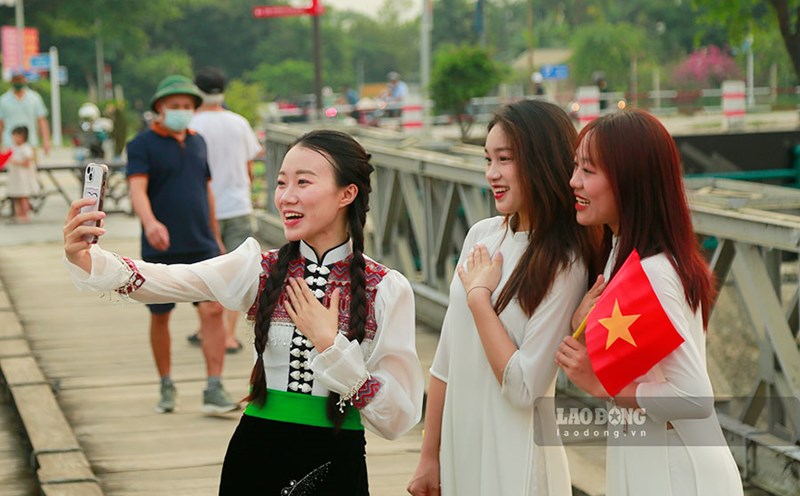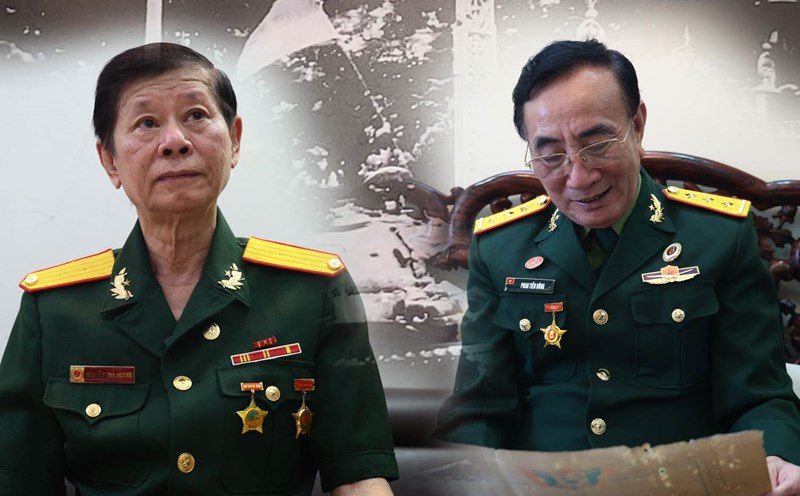According to the writer, the Liberation of the South and National Reunification Day, April 30, 1975, was a great milestone in the history of the nation. He witnessed the indescribable joy of Hanoi that day.
Hanoi - a place that has settled down with mountains and rivers for thousands of years
For writer Nguyen Ngoc Tien, Hanoi is the topic of "talking forever, writing forever", because the layer of cultural and historical sediment has been nurtured through many different erades.
Many heroic battles took place in locations across provinces and cities, but Thang Long-Hanoi was always the final destination, also the place to end the war for this sacred land, the Capital, the Capital.
Therefore, Thang Long-Hanoi suffered a lot of pain and sacrifice, but was extremely brave. Based on historical documents, writer Nguyen Ngoc Tien chose the 5 most important periods in the history of more than a thousand years of Thang Long - Hanoi.
First is the milestone of the three times the Tran Dynasty defeated the invading Nguyen army. After that, Le Loi defeated the Ming army, King Le paved the way for the invaders to live.
In the third milestone, Quang Trung destroyed the Thanh invaders at Ngoc Hoi station, Khuong Thuong advanced to liberate Thang Long, also following the spirit of harmony when dealing with the defeated army.
In the 20th century, Hanoi had two unforgettable milestones: when the French colonialists reoccupied Hanoi, the Capital Regiment, despite lacking and few weapons, fought steadfastly for 60 days and nights, from late 1946 to early 2020.
The final milestone was the US air force's B52 bombing in late December 1972, causing a painful defeat in the final failed funeral, and had to sign the Paris Agreement to withdraw from Vietnam.
Unforgettable memories
Writer Nguyen Ngoc Tien said: In 1965, when I was 7 years old, my whole family had to evacuate to Thuong Tin. Life in wartime was extremely miserable: there were no soap or black or purple-dyed clothes, and when torn, they were patched up to wear to school. In winter, there is only a thin sweater. Old, poorly nourished commercial rice, and hungry after eating. My house is near Bach Mai airport - a key point of the US Border Guard, so even though we were evacuated, we still worried about our parents staying in Hanoi.
In April 1972, the US bombed Hanoi for the second time. In May 1972, my hometown in Phuong Liet was hit by a blockbuster, a family was preparing to evacuate, with no survivors. In December 1972, the US used B52 to hit Hanoi and Hai Phong. Responding to the military's missiles and air defences, the plane, known as a panic stronghold, dropped bombs haphazardly. From Giap Bat Station to Tam Village, Phuong Liet, Bach Mai Hospital was devastated by bombs, killing innocent people.
On January 27, 1973, the United States had to sign the Paris Agreement, families evacuated in many countryside with joy to return to the city and go home. From this day to April 30, 1975, Hanoi is temporarily in a peaceful atmosphere. In this stage, life is even more difficult than before, rice is given to the battlefield, so the city's food industry instead of rice with bread for several months. And until April 30, 1975 - The day the tank ranged down the gate of Independence Palace, the Republic of Vietnam government announced its surrender caused the people of the whole country to burst ".
Writer Nguyen Ngoc Tien was a 10th grade student at that time, he missed Hanoi as happily as a festival.
Writer Nguyen Ngoc Tien said: When Doan Ket 3 School was off school, our students were busy cycling to Hoan Kiem Lake. Bach Mai Street, Hue Street, Hang Bai were crowded with people, the train drivers rang the bell to ask for the road, but everyone ignored it and joined in the joyful atmosphere of victory. The Hoan Kiem Lake was brilliant with red flags, banners, and crowds. We went around the lake all morning, forgetting to be hungry or thirsty, until the lights were on before saying goodbye to go home.
But, in another corner of Hanoi, families with husband and children in the Southern battlefield silently and quietly hope that their survivors will return.
According to the writer, in those days the city decided to sell additional meat standards for families to make spring rolls or cook rice to celebrate the victory and the country's reunification.
Writer Nguyen Ngoc Tien, born in 1958 in Hanoi, naturally loves this city like anyone who loves their homeland. During his career as a journalist, he had the opportunity to meet many culturalists, historists, and architects associated with Hanoi - those who strongly inspired him in his journey to write about this land. To date, he has launched 13 books about Hanoi, typically 5678 steps around Hoan Kiem Lake, Di Dien Ha Noi, Di ngang Ha Noi, Di xuyen Ha Noi...











